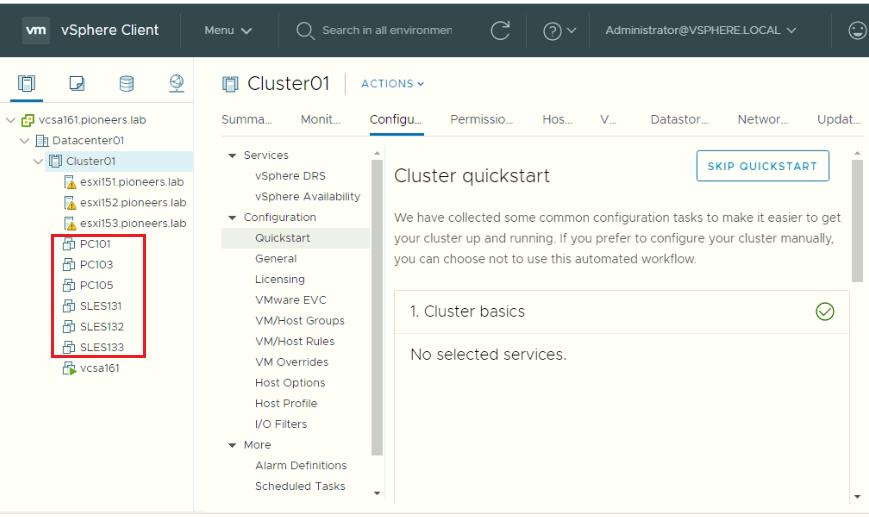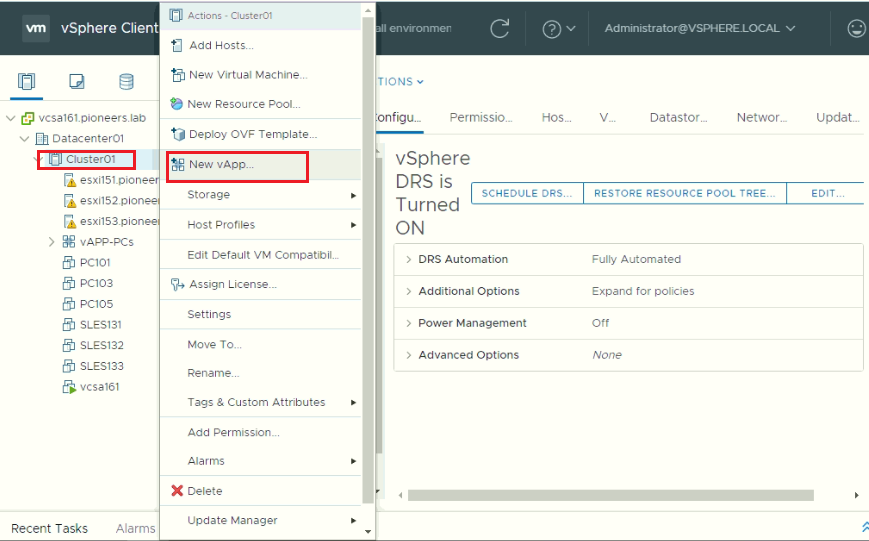introduction
VApps allow VMs to work together in a stack as an application, and support cloud computing architectures
in previous article we got introduction about vAPP before
this article we will discuss how to configure it in pioneers LAB
network diagram
please have a look to above network diagram
we have vsphere environment which include 6 Virtual machines :
3 windows 10 VMs :
- PC101
- PC103
- PC105
3 Suse Linux VMs :
- SLES131
- SLES132
- SLES133
we will create 2 vAPP :
- vAPP-PCs with normal option and contain windows 10 VMs
- vAPP-Linux with High option and contain Suse Linux VMs
vAPP requirements
In order to use vApps You will need:
- VMware vCenter
- DRS enabled
enable DRS
as we mentioned above :
we have to enable DRS Distributed Resource Scheduler on cluster level
by default DRS is disabled
so we are unable to create vAPP as seen below
to enable DRS :
- open vCenter > cluster > configure > DRS > edit > enable DRS
power-on / power-off VMs in vAPP
to test vAPP functionality : we can click power-on vAPP : which will shutdown ALL VMs inside vAPP based on order





























